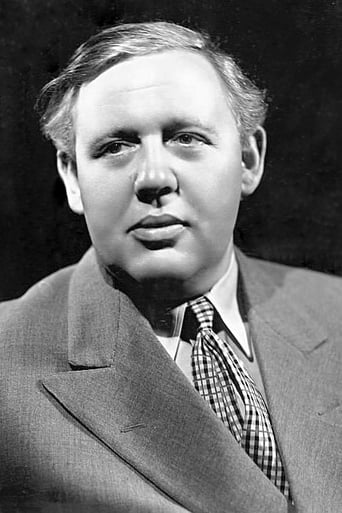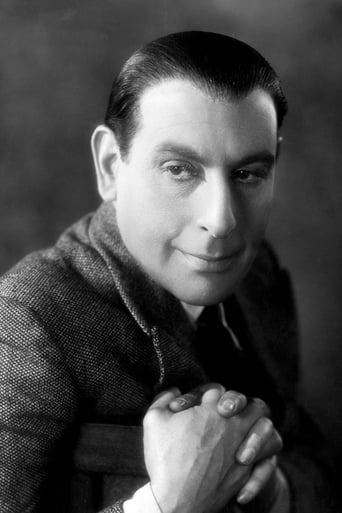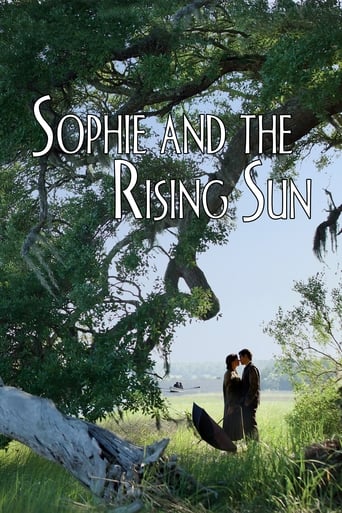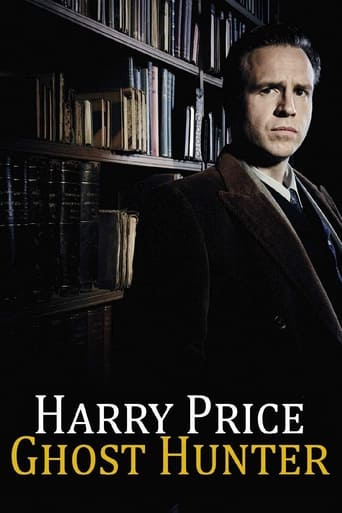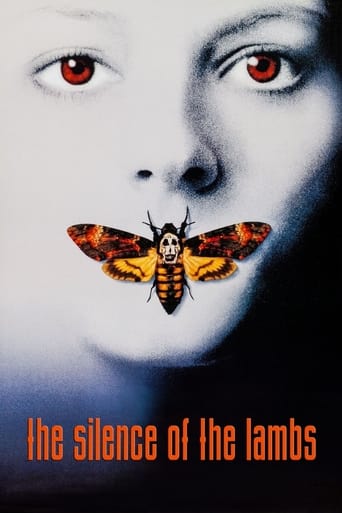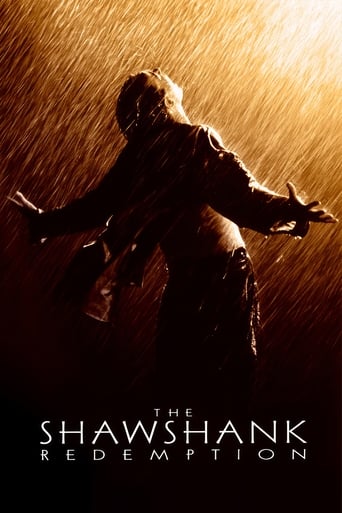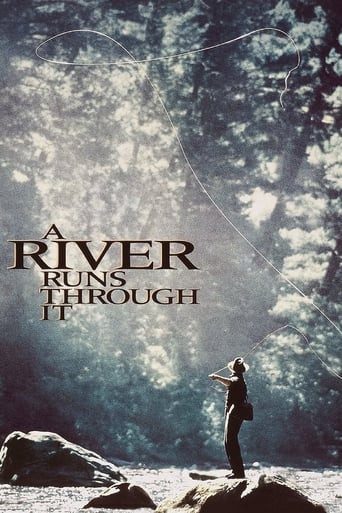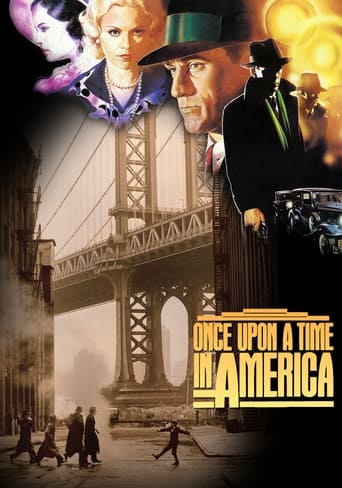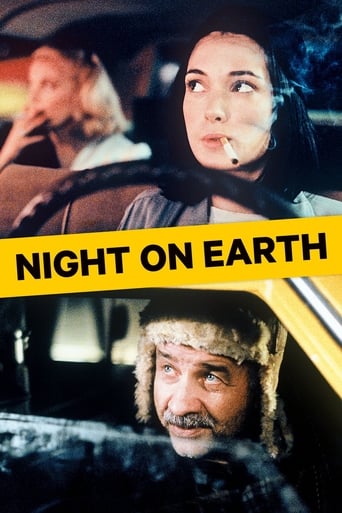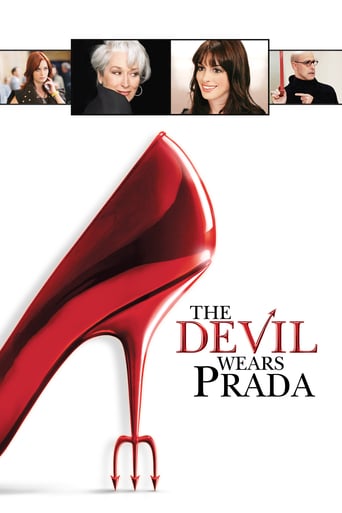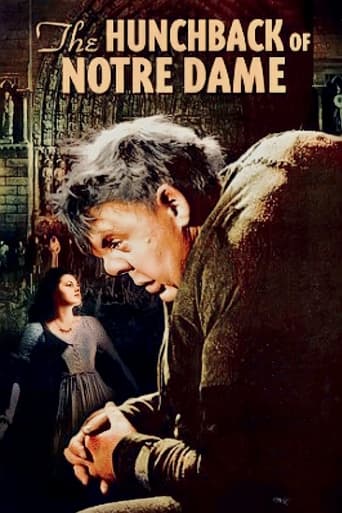
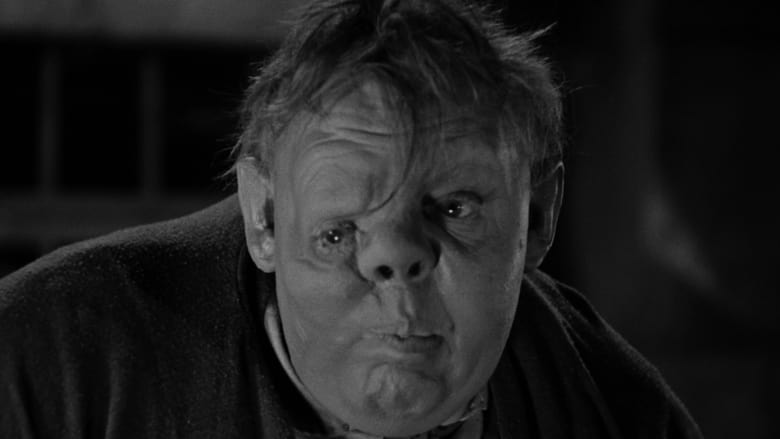
The Hunchback of Notre Dame (1939)
Paris, France, 1482. Frollo, Chief Justice of benevolent King Louis XI, gets infatuated by the beauty of Esmeralda, a young Romani girl. The hunchback Quasimodo, Frollo's protege and bell-ringer of Notre Dame, lives in peace among the bells in the heights of the immense cathedral until he is involved by the twisted magistrate in his malicious plans to free himself from Esmeralda's alleged spell, which he believes to be the devil's work.
Watch Trailer
Cast
Similar titles
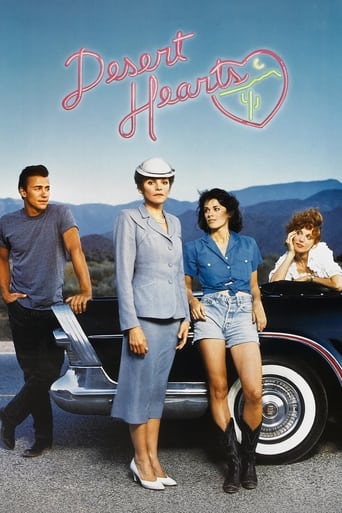
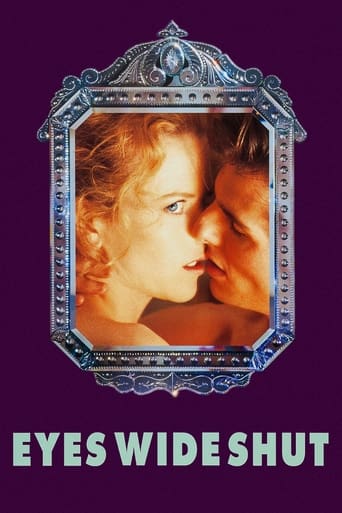
Reviews
the audience applauded
Fun premise, good actors, bad writing. This film seemed to have potential at the beginning but it quickly devolves into a trite action film. Ultimately it's very boring.
The film makes a home in your brain and the only cure is to see it again.
One of the most extraordinary films you will see this year. Take that as you want.
There's a theory I've invented, called "Humphrey Bogart-itis". Humphrey Bogart-itis dictates that whatever performance you first watch of an actor will mark how you see him or her forever after. Humphrey Bogart, famous for his gangster and detective films, played the nice guy in The African Queen. Since The African Queen was the first Humphrey Bogart movie I ever saw, I always think of him as being nice and sweet. The first Charles Laughton movie I ever saw was The Hunchback of Notre Dame. Even though Charles famously played such villains as Captain Bligh, Inspector Javert, Captain Kidd, and King Henry VIII, I always think of him as Quasimodo. To me, Charles Laughton is pitiful and lovable, and I always want to reach into the screen and envelop him in a big hug.Disney patterned their drawing of Quasimodo after Charles Laughton, and when you watch this 1939 version-there have been quite a few remakes-you can see the numerous similarities between it and the cartoon. Cedric Hardwicke plays the cruel, cold Judge Frollo, and a seventeen-year-old Maureen O'Hara plays the wild but loving Esmerelda. Charles Laughton discovered Maureen and helped her get the part, adding an extra sweetness to their scenes together. Just as in the cartoon, there's a Clopin, played by Thomas Mitchell, and a Phoebus, played by Alan Marshal. The order of scenes is nearly identical, but there's an added sadness the cartoon understandably chose to cut: Quasimodo is deaf.If you watch five minutes of Charles Laughton's performance without bursting into tears, you've misplaced your heart. It's one of those performances, like Robert De Niro in Awakenings, Sean Penn in I Am Sam, and Shirley Booth in Come Back, Little Sheba, that reduces you to a puddle within minutes. In itself, The Hunchback of Notre Dame is a heart-wrenching story, but Charles's incredible performance makes it one of the great classics of the silver screen, and certainly the most famous film adaptation of Victor Hugo's novel. As you might expect, since the Academy snubs better performances than it awards, Charles Laughton wasn't even nominated for an Oscar for his performance. You may have already seen the famous "Sanctuary!" scene, and while I'm sure that scene brought tears to your eyes, I highly recommend you watch the full movie to make good use of that box of Kleenex going to waste on your coffee table.
I simply don't understand why everyone praises this movie to such an insane degree. One of the reviews calls it "the peak of art in Hollywood cinema" and another "one of the best Hollywood movies ever". Uh...really? Have you watched it recently? Sure, the technical achievements are great. The set of Notre Dame looks breathtaking and huge. And sure, it has a great story to work with, but they're already basing it on one of the best books I've ever read. As an adaptation of Hugo's novel, and as a standalone movie, it does a forgettable job.Let's begin by saying something positive about the movie: Charles Laughton's performance as Quasimodo. He dominates this movie in every scene. Not only is the makeup fantastic, but you can feel the pain and misery of this classically tragic character every time he utters a line, or even just looks at the camera. If it weren't for Laughton, I'd have given this movie far lower than a 5. Every other actor is forgettable. Esmeralda is an awkward Maureen O'Hara early in her career. Never mind that she looks NOTHING like a gypsy, but her performance is standard and rather boring. O'Hara would become a good actress in the 40s and would sadly pass away in 2015, but this early work is nothing special. Cedric Hardwicke takes the complex, brooding, conflicted character of Frollo, and turns him into a generic, racist bigot. He and Quasimodo have no connection whatsoever. The complicated interactions of characters that gave the book its intensity and drama are not to be found here.Maybe the reason I dislike this movie is because the book raised my expectations. I suspect those unfamiliar with the story, being exposed to it for the first time, would enjoy this movie quite a bit, simply for the fact that it's a great story. But as far as adaptations go, there are better ones. Even the Disney movie, in my opinion, better captures the spirit of the book. Rather than manifesting itself as a stiff, stunted poor man's version of the Hugo novel, the Disney version has its own dark tone and identity, and it works. Minus the singing Jason Alexander gargoyles.One might say that it was very good at the time. After all, it came out nearly eighty years ago. But look at what else was released in 1939. The Wizard of Oz. Gone With the Wind. And one year before that, The Adventures of Robin Hood. Two years before, La Grande Illusion. All of those are masterpieces, with better acting, smarter scripts, and greater depth.Like all versions of "Hunchback", this one creates a world of ignorance and bigotry, where laws are based on millennia-old traditions and petty prejudices triumph over logic. It succeeds in creating this world, though it feels particular ham-handed. In one scene, the King asks some of his courtiers about Christopher Columbus's voyage around the world, to which they exclaim that the world is so obviously flat, and Columbus is such a fool. Even though the fact that the world is round was common knowledge in Europe since the time of the ancient Greeks. And every crowd in this movie is absolutely temperamental. One minute, they worship Quasimodo as a king; the next, they call for his death; then, when he saves Esmeralda, they cheer again. The gypsies seem to love Gringoire at first (an incredibly pointless character, I might add, even in the book, where he's just Victor Hugo's self-insert) and then prepare to execute him. The movie is disorganized and clumsy, taking the romanticized, Gothic tone of the book and making it absurd.This movie has some great moments. Laughton's performance. The grand set of Notre Dame. The intense final climax where gypsies invade the cathedral. But the rest of it is utter crap, and I say that without a moment's hesitation. Therefore, it evens out. If you hate Disney, hate reading, and want to see a pretty faithful adaptation of the story, feel free to watch it. Otherwise, I would pass on this one, check out "Hunchback" at the library, and dive into the dark, complex story that Victor Hugo created.
For many viewers, this 1939 version of the classic Victor Hugo novel is the definitive retelling of the story. It's the one that stars an excellent Charles Laughton in the titular role, playing the deformed hunchback antihero who ends up proving his mettle against the corrupt local justice. It's not just Laughton's make-up job which is legendary: his performance is excellent too, really investing the audience in his sympathetic character.THE HUNCHBACK OF NOTRE DAME tells a fast-paced and engaging tale of life in 15th century Paris. A huge tableau of characters are assembled, some of them lovable, some of them hissably evil. Most notable of all is the recently-deceased Maureen O'Hara who shines as the innocent gypsy girl Esmerelda, drawn into becoming a pawn shared between the forces of good and evil through no fault of her own.This RKO picture boasts exemplary production values and some excellent sets and scenery. Sir Cedric Hardwicke memorably chews the scenery as the black-hearted villain of the piece, but he gives just one of many strong performances here. It's a roller-coaster ride of love, hate, adventure, murder, and madness, all with a tragic heart, a sort of Middle Ages version of THE ELEPHANT MAN if you will.
Considering that RKO was not renowned for epic film making, the production mounted for this version of Victor Hugo's classic story is surprisingly elaborate and effective.The Paris set is a beautiful creation and possibly the greatest work by Van Nest Polglase, who with the producer Pan Berman is chiefly remembered today for the elegant art-deco designs for the Astaire-Rogers musicals.The centrepiece of this remarkable set is the replica of Notre Dame cathedral which was only built to 50% height of the original; the towers above were added as an optical effect by use of a hanging miniature in some shots and by incorporating a glass painting in long shots. It's very convincing.Dieterle was the perfect choice to direct this story. A student (and later collaborator) of Max Reinhardt, he marshals the huge crowd scenes (no CGi here - those thousands of peasants are all real people) with aplomb and his mastery of expressionistic imagery informs every frame.Alfred Newman brought an intelligence to the musical score rare in Hollywood. His on screen credit "Musical adaptation and original composition by" reflects his skillful combining of original renaissance choral music by Tomas Luis de Victoria with his own work. He also uses a stirring Hallelujah chorus by uncredited Austrian Jewish émigré Ernst Toch (in Hollywood to escape the Nazis) for the memorable scene where Quasimodo rescues Esmeralda, reprised at the film's closing sequence as the camera pulls back from Notre Dame.It's a great pity that a better restoration cannot be achieved for this beautiful film than is currently available on DVD. While the source print is serviceable, it is often poorly defined and suffers from many scratches. Perhaps it is the only print now extant? I would also love to see the original trailer rather than the re-release version.While some may wish Basil Rathbone could have been released from contract at Universal to play Frollo, I think Cedric Hardwicke was ideal casting. As for Laughton, this may well be his signature role and a masterly example of great acting with hardly any dialogue at all.As Mr Sinatra once said - "You can wait around and hope - but you won't see the likes of this again"
